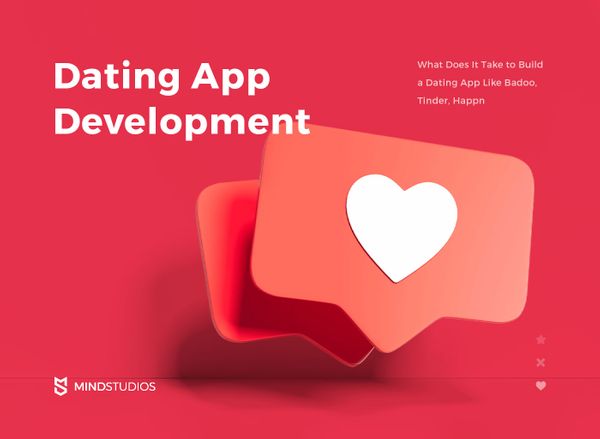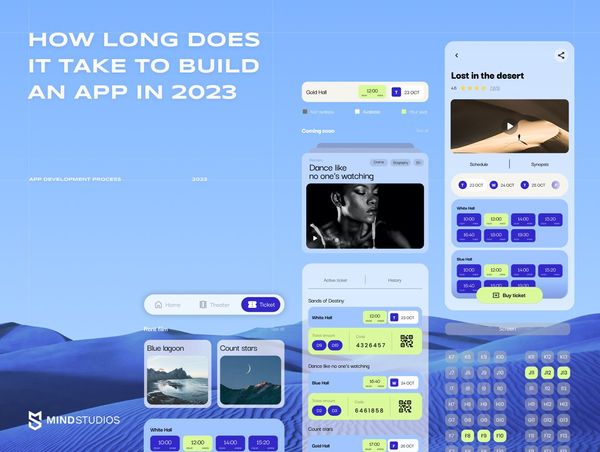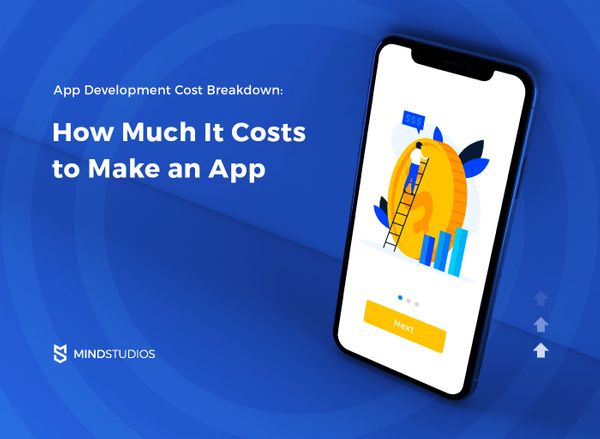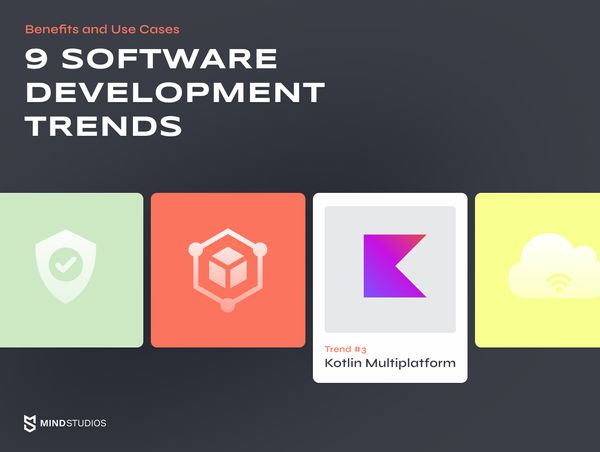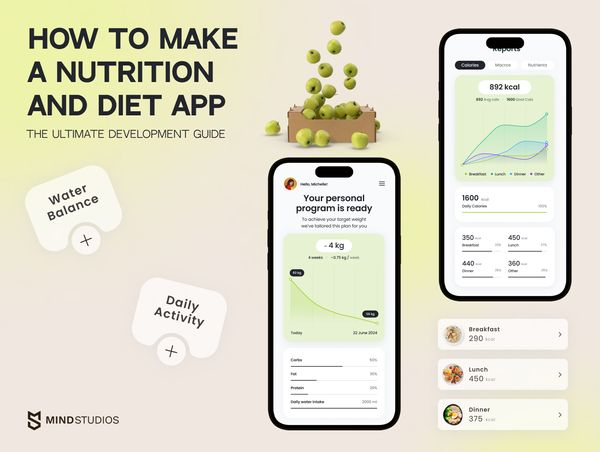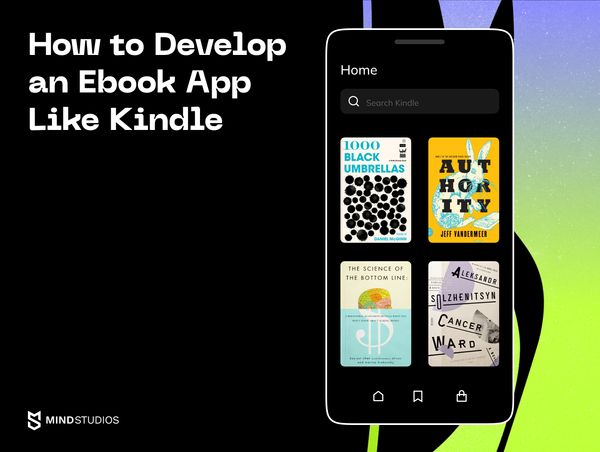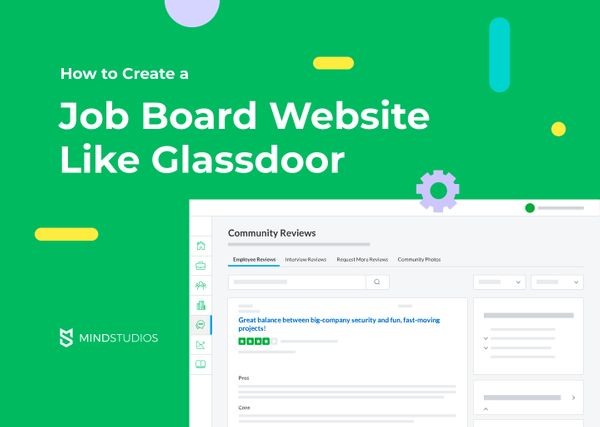
Learn how to build a website like Glassdoor.
Although the US unemployment rate is at its lowest in 50 years, there’s still a strong demand for jobs. People will always look for a better place to work, which means job boards will always be in demand.
Content:
- What is a job board website?
- Popular job board websites
- How to create a job board website
- Features for job seekers
- Features for employers
- How do job boards make money?
- Developing a job posting website
- How much does it cost to make a job board website?
What is a job board website?
Before the age of the internet, job offers used to be posted in newspapers, on physical job boards in post offices, and on bulletin boards in all kinds of establishments, from pubs to hotels. These days, though, we do almost everything with the help of computers and mobile devices.
A job board is a website where job seekers can post their résumés and companies looking for employees can post job offers. Sounds simple enough, right? Well, as with most simple things, it’s a bit more tricky when it comes to implementing the idea in software.
Examples of popular job boards
Today, it seems like anything can be done on Facebook. You can use Facebook to play games, buy and sell things, find a date, and more. Jobs can be posted on a company’s Facebook page, Facebook has a job search feature, and recruiters don’t shy away from hitting up specialists on this social network. However, Facebook isn’t a full-fledged job board, and its functionality isn’t explicitly geared toward employees or job hunting (at least not yet). Before we talk about how to create a job search website, let’s look at different websites that are explicitly created for those seeking jobs or looking to hire.

LinkedIn is probably one of the first names that comes to mind when you're looking for a job or looking to hire. The uniqueness of LinkedIn is that it’s not your typical job board but a social network. Basically, it’s Facebook for professionals. On LinkedIn, people fill in their profiles with job-related data for recruiters to see, while companies have their own pages where they can post vacancies and promote themselves in a variety of ways. LinkedIn serves as an easy-to-use and flexible résumé for both job seekers and companies.
Upwork

Upwork is a job board tailored to freelancers and those who want to hire them. It’s another atypical job board, as it’s more of a custom peer-to-peer (p2p) marketplace with functionality that includes a payment gateway and other P2P perks.
Glassdoor

Glassdoor is one of the most popular job board websites in the US (and one of the biggest in the world). It’s said to have over 65 million unique monthly visitors and approximately a million employers listing jobs. Glassdoor’s killer feature is that it offers anonymous reviews of companies that list jobs on the platform. Reviews mean job seekers are offered some inside information about the company they’re eyeing, which is always appreciated by those seeking long-term employment.
Besides reviews, Glassdoor provides salary data, such as the average salary for a specific position in a specified area. This lets applicants estimate their salary demands and helps battle pay inequality.
Monster

Monster is another mammoth on the job boards market. It works in over 50 countries all over the world. What sets Monster apart from competitors is its massive pool of career advice. Monster staff follow all the newest trends and share tips on not just writing a résumé, for instance, but creating one in a video or podcast format, which is still unusual but is gaining more popularity each year. There’s even a monthly career horoscope.
How to create a job board website
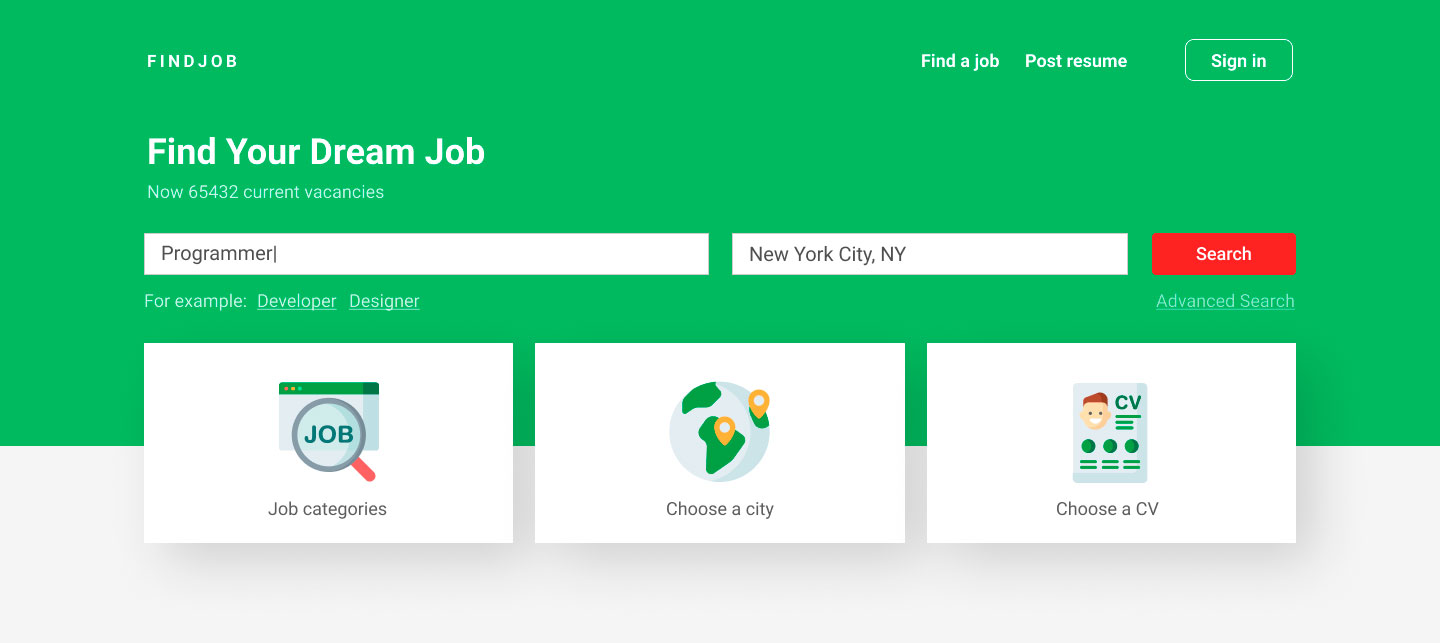
In a way, a job board website is very similar to a peer-to-peer marketplace — a website where people buy and sell products and services. But the feature set is slightly different on a job board and, hence, the development will also differ. Moreover, some P2P marketplaces are also job boards — for example, Upwork — though these are usually focused on freelancers instead of full-time employment.
If you’re interested, you can read more about P2P websites in our article about how to build a peer-to-peer marketplace.
Now back to job board development.
Job boards provide services to employers and employees alike, meaning that when you create a job board website, you’ll need to think of two sets of features for users and an admin panel for yourself.
Features for job seekers
1. Sign-up/Sign-in
For job seekers, it’s important that the initial sign-up and further sign-in take as little time as possible. That’s why we highly recommend integrating sign-in via social networks. Facebook is a good universal option for this, as is Google. But since you’re planning to make a website for jobs, sign-in via LinkedIn might also be favored by your users.
2. Profiles
Different types of profiles exist on job boards. Some are visible to potential employers — like a LinkedIn profile, which doubles as a résumé and displays all information that may be relevant to an applicant’s professional life. However, on most job boards, a résumé is a separate feature and the profile only displays the most necessary information.
Regardless of the type of profile you go for, it should be easy to fill out and edit. Make editing a fast one-click action. This will be seen as a big perk in the eyes of busy applicants.
In the settings, allow users to set their profile visibility to public or private. This is necessary, for example, when a user has found a job but doesn’t want to delete their profile altogether in case they need it again.
3. Résumé builder

Not everyone is good at talking about their own good sides, either aloud or on paper. And some professionals, especially young and inexperienced ones, lack the skills to build a winning résumé. You can offer them advice on your company’s blog, but you can also offer tips and provide virtual assistance with a résumé builder.
4. Document and file upload
When it comes to making a website like Glassdoor or Monster — or any other job board, for that matter — the ability to upload documents is a must. Many people have a résumé or CV saved on their computer as a text or PDF file. By uploading this file to job websites, users can avoid filling out the same information time and time again.
Besides a résumé, users need an option to upload their certificates from courses and schools, photos from conferences, and other proof of their professional achievements.
5. Job search

This is, of course, the core of any job board website. Job search functionality should be easy to spot on the page and should be intuitive. We recommend implementing a search suggestion feature: when applicants enter the first letters of a desired position or company, the search box should offer suggestions.
Another convenient search feature is filtering and categories. You can offer them as part of advanced search. Here are some suggestions as to what filters to implement:
- Industry
- Position
- Level (entry, junior, middle, senior)
- Type of employment (full-time, part-time, remote, project-based)
- Desired salary
- Location (+ checkbox for relocating)
- Company (if the applicant wants to work for a certain company)
6. View profiles of companies
Applicants should be able to see details of the company they’re considering applying to. You can offer shortened profiles displayed right on the search results page. This will be appreciated by many. If you’re making a custom job board website like Glassdoor, it’s also good to have reviews from current or former employees of what a company is like on the inside.
7. Apply for a vacancy and/or contact the company

When a job seeker has found something they think is fitting, they need a way to contact the employer right away, without extra steps like going to the company’s website or composing an email. A simple contact form needs to be in place. If you’re making a joint contact+apply feature, it needs the option to upload a résumé.
8. Bookmarking
Sometimes, job seekers aren’t sure right away about a company or position they’re viewing. Usually, users either leave the tab open or save a link in, say, Evernote. But an option to bookmark the posting right on the job search platform is more useful. This allows applicants time to think about the position without leaving the site or worrying about forgetting the details.
A similar feature might be useful for employers as well, by the way, allowing them to save profiles of candidates.
Features for employers
1. Sign-up/Sign-in
Sign-in for companies is generally done via corporate email accounts. However, it’s not unheard of for job board websites to allow persons managing the company account to link LinkedIn and/or Facebook accounts.
2. Profile
A company profile typically features an overview of the company, a brief company history, and sometimes an introduction to the team.
3. Vacancies
Posting a job offer on a job board should be easy and intuitive. Work with your development team and designers to create easy-to-understand forms that will allow employers to fill out job requirements in a logical and simple way.
4. Search for applicants
Offer the same type of search functionality to companies that you offer to job seekers. Naturally, some filters will differ. Here’s an example of filters for companies:
- Industry
- Position
- Level (entry, junior, middle, senior)
- Type of employment (full-time, part-time, remote, project-based)
- Location (+ checkbox for relocating)
- Experience
- Education
- Languages (and level)
- Certifications
Some websites like Monster allow company representatives to rate applicants with whom they’ve interacted. This can be both an added functionality and a search filter.
What to pay attention to when you make a job posting website
- Security
Users will likely keep their personal data on your job board platform, including contact information like email addresses and phone numbers. Even if you provide users with a means of on-site communication, chances are some will prefer personal communication. Forbidding it altogether might be unwise. Build your site with the functionality to hide sensitive information from unregistered or unconfirmed users as well as from users with low ratings. Also, implement technologies that will prevent a website from hackers.
- Search algorithms
To match job offers with applicants’ profiles, you’ll need matching algorithms. Traditional algorithms work using keywords, but that’s not a foolproof method. Sometimes, similar positions might be called different things, for example, and keyword-based matching will skip a number of relevant profiles simply because the words aren’t the same. A good matching algorithm works around issues like this.
Today, more and more websites that deal with any kind of matching (for example, dating services) use artificial intelligence and machine learning to improve the results. Self-educating systems can expand or narrow search results with the help of data they gather from users.
- Moderation
Searching for a job is a taxing activity for many, and the same goes for searching for employees. It can take months to find the right candidate. That’s why incorrect, outdated, and outright fake profiles are frustrating for companies and job seekers alike. As you think about how to build your own job board website, plan for moderation functionality. It can be implemented using a report button or with a special algorithm that flags old listings and profiles with low ratings.
- SEO
Job board websites like Glassdoor and Monster receive a major part of their traffic — almost 70% — from search engines.

[Source: SimilarWeb]
Hence, the value of search engine optimization (SEO) is tremendous in this niche. If no one finds your site, no one will buy your services. You need to include SEO recommendations in your project from the very beginning and build your job board with SEO in mind.
How do job boards make money?
When asked how job portals make money, we can suggest several options. Besides placing ads — which might be a turn-off for many users — there are several other monetization models for job board websites.
-
Paid listings. You can charge a one-time fee for each listing or a fee for a job post to be displayed for a certain period of time.
-
Subscription. A subscription allows companies to post job offers and applicants to access profiles and contact companies.
-
Premium services. You can set limitations on functionality and lift them for a fee. For example, you might limit the number of images or documents users can upload. Another option is to display the profiles of Premium companies and applicants at the top of search results.
Most popular job boards use paid listings to earn money. To make that work, you’ll also need two separate sets of payment plans — one for companies and one for applicants.
Developing a job posting website
You have three main options when it comes to developing a job posting website: WordPress plugins, SaaS, and custom development.
SaaS solutions are the companies that offer a full package to build and maintain a website — in our case, a job board — for a fee. It’s the easiest way since everything is done for you, you don’t need to do much at all.
The most popular open-source solution is WordPress, though there are alternatives.
What is best to build a job portal website depends on what you’re aiming for. In the table below, we compare all three options and offer our recommendations on when to use which.
| WordPress | SaaS | Custom website | |
|---|---|---|---|
| Pros |
|
|
|
| Cons |
|
|
|
| When it’s the best option |
|
|
|
WordPress- and SaaS-powered solutions are way cheaper than custom websites. However, they’re more suited for small-scale local use due to their low scalability and limited flexibility. If you’re planning to create a job website to expand your business in the future, it’s worth considering a custom-made solution. If you’re satisfied with your local niche and have few or no competitors, on the other hand, there’s nothing wrong with building your online job board website with either WordPress plugins or software-as-a-service platform.
How much does it cost to make a job board website?
Calculating the cost to make a website like Glassdoor isn’t an easy task, as in large part it will depend on your development company.
Hiring a team of web developers for in-house work is generally considered a waste of money, but outsourcing prices vary from region to region.
Hiring a web development company in the US for creating a job aggregator website is the most expensive option; the cheapest options are usually in India. Eastern Europe is considered by many to be a golden middle between price and quality. You can find out more about this in our article on how to find the best development company.
To make your job board website, you’ll need the following team:
- 1 project manager
- 1 UI/UX designer
- 1 frontend developer
- 1-2 backend developer
- 1-2 quality assurance specialist
This is the basic team assigned to any website development project by default. You can add more developers or designers to speed up the work if you need. If we count all the features set out in this article and work with a basic team, it will take approximately 5 months to create a job portal website and the cost will start at about $51,000. Cutting features or adding new ones will affect the price, as will the use of specific technologies and the complexity of your design. So take this estimate for what it is — a very rough assessment of the cost.
Conclusion: How to start a job board website
The job search industry has endless potential, but building a job board website from scratch to compete with behemoths like Glassdoor and Monster isn’t easy. We recommend you start by choosing a niche — build a board for a specific location, industry, or type of professional. You’ll be able to scale later, especially if you choose custom development. Starting with a niche site, you’ll save money and will have time to launch gradually, catching bugs and adjusting to emerging trends.
If you need help or have questions about how to create a job portal website, we’re ready to offer our expertise, drop us a line via a simple form.



